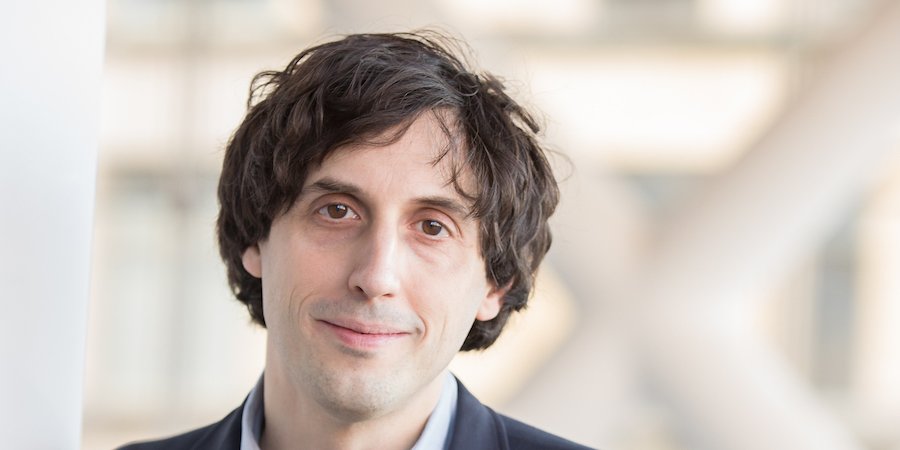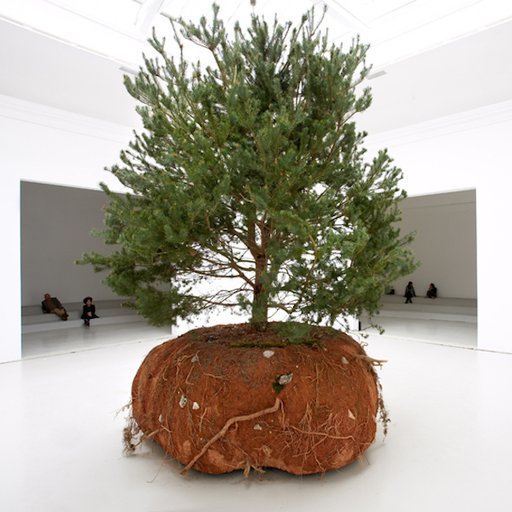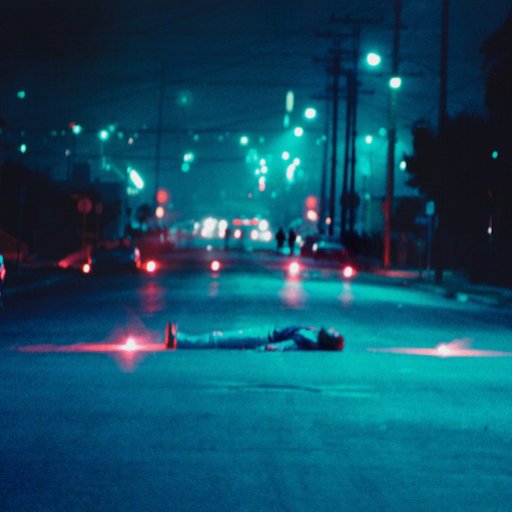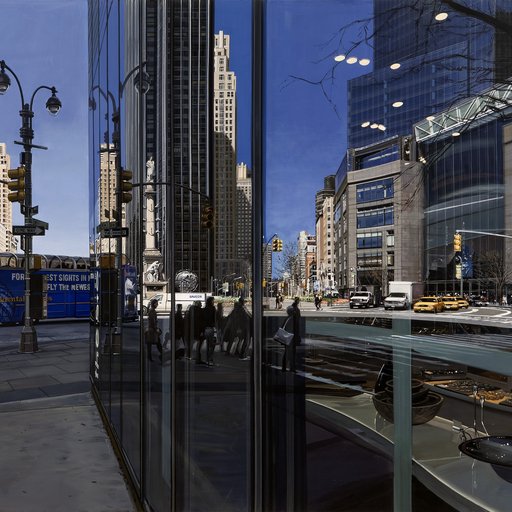“We’ve never had this many people in here before,” the MC warned the crowd that had gathered in the darkened theater. “Apparently the police are here.” At that, a hip-hop beat began thumping and a rotund cop in dark sunglasses ascended the stage, munching on powdered donuts and then tossing the remnants into the audience; after a few minutes, the officer shook off her peaked cap to reveal long blonde hair and shimmied out of her uniform (and fat suit) to perform a sexy chair dance in a G-string. The alternately grey-haired and millennial admirers in the seats murmured appreciatively, but this wasn’t your typical downtown burlesque club—it was a theater on the new Whitney Museum building’s education floor. The curator Jay Sanders, one of the younger rumpled fans in the audience, had charged the seminal 1980s East Village duo Dancenoise with transforming the space into an anarchic burlesque revue.

A tousle-haired 39-year-old former DJ who was initially recruited by the Whitney from a dealer post at Greene Naftali Gallery to co-curate the 2012 Whitney Biennial, Sanders is interested in doing more than just bringing a bit of titillation to the century-old museum as it settles into its Meatpacking District digs. With two theaters at his disposal—one a 170-seat reconfigurable space with views of the Hudson, the other a “black box” multimedia site that opens onto a roof deck—he has a mandate to “challenge and provoke and show the potentialities of art—performance art, visual art, whatever—to communicate in ways that nothing else can,” as he puts it.
And his domain doesn’t end at the theater door. At the gala opening party of the museum last May, performances spilled out onto the museum’s front steps—where the venerable Wooster Group enacted a ribbon-cutting ceremony—and then climbed up the Whitney’s outdoor terraces, where avant-garde music legends John Cale and Tony Conrad came together for the first time in 50 years for a six-hour concert that coincided with a screening of Warhol’s Empire.
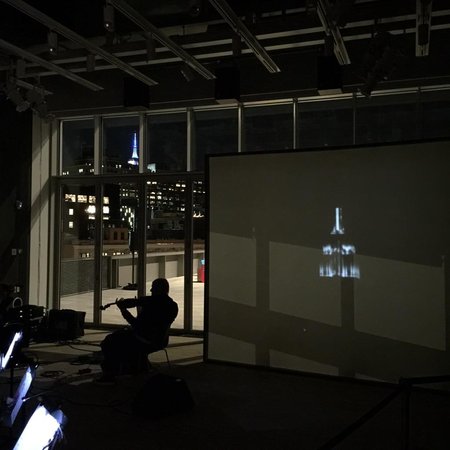 Tony Conrad performing at the Whintey's opening celebration with Warhol's Empire screening behind
Tony Conrad performing at the Whintey's opening celebration with Warhol's Empire screening behind
Performance has always been an integral component of the Whitney’s programming. In the late 1960s, it included jazz: a Composer’s Showcase, initiated in 1968, featured such landmark moments as Ornette Coleman, Sony Rollins, and Cecil Taylor playing together in a gallery, and Duke Ellington’s final piano recital (recorded in “Duke Ellington Live at the Whitney”). In 1971, Trisha Brown performed her canonical “Walking on the Wall” dance across a museum wall, suspended from the ceiling by ropes (Stephen Petronio reenacted this piece on the Whitney’s façade in 2010). From 1983 to 2007, the museum’s Phillip Morris (later Altria) space across from Grand Central Station was the primary locus for the medium. Sanders is dedicated to continuing this tradition—and, if anything, incorporating performance even more thoroughly into the museum’s programming.
A generous hint of his direction could be seen in the 2012 Biennial (then hailed by New York Times critic Roberta Smith as “one of the best Whitney Biennials in recent memory”), which included such unforgettable moments as Werner Herzog’s presentation of drawings by Hercules Segers intermixed with filmed performances by the Dutch avant-garde cellist and composer Ernst Reijseger; Dawn Kasper’s performative residency in a ramshackle studio of her own creation on the museum’s third floor; and the transformation of the entire fourth floor into a long stage for dance, most memorably Michelson’s highly concentrated, multipart “Devotion Study #1—The American Dancer.” In addition, a series of films screened in the museum’s cinema throughout the show.
“When we made the fourth floor a performance floor, created a robust film program with scheduled screenings, and then had durational performances mixed in with visual art, it asked so many different commitments from the audience and dealt with viewing in different ways,” Sanders says. “It’s interesting when an exhibition can accommodate all those different varieties of looking and duration. It also begs the question: what other new ways can we offer artists to deal with temporal work? Can you stretch the kinds of looking—the kinds of art that people can take in in one space?”
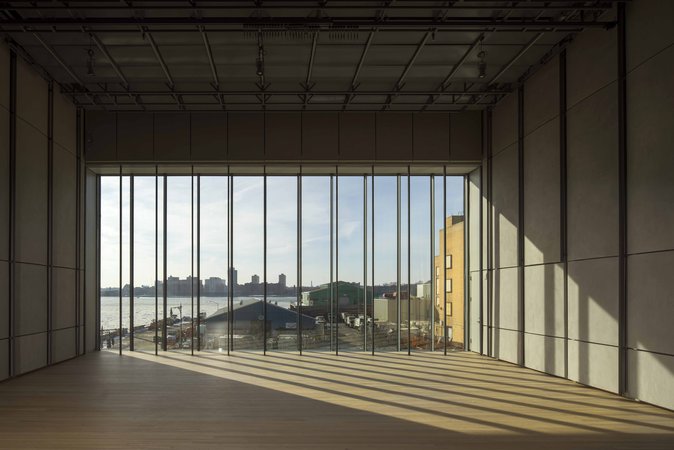 The Whitney's new, highly configurable theater
The Whitney's new, highly configurable theater
A watchful presence who seems to prefer easing into a darkened audience to ringleading from the stage, Sanders developed his prodigious tastes in performance while growing up in Portland, Oregon. “Music, dance, and poetry were my first loves,” he says. Working as a DJ while attending Reed College in the 1990s, he became involved in the local music scene, booking bands and doing a radio show. He also became deeply interested in art, and after graduation he moved to New York, where he worked at Marianne Boesky Gallery for half a decade before moving to Greene Naftali in 2005 (where he was responsible for such genre-expanding shows as the unforgettable Paul Sharits survey of 2011).
Throughout this period, Sanders organized performances and screenings at alternative crucibles like Jonas Mekas’s Anthology Film Archives, ISSUE Project Room, the Stone, and Performa, celebrating the work of figures as diverse as Harun Farocki, Bas Jan Ader, Charlemagne Palestine, Keiji Haino, and HOT GARBAGE (the musical duo Spencer Herbst and Phillippa Shao). His aesthetic is as much indebted to the cold-water flats of the ‘60s as it is to the underground clubs of the ‘80s.
“I like entertainment, and I like things that sort of push entertainment and artistic experimentation,” he says. “Maybe it’s just my sensibility, but with music and dance and theater I’m attracted to the commitment it takes to pull those kinds of things off, and what can happen when the artist is really working in the moment—it’s just unlike other kinds of art.” In his post at the Whitney, he says, “I feel very fortunate that a lot of the things that I’m very interested in are in synch with what the museum is thinking.” And in a world permeated with digitally enabled virtual experiences, one of these things is a desire to create in-person experiences that can inspire people to leave their laptops and walk into the Whitney. Nowadays, however, the kinds of tight subculture communities that used to bring devoted fans out to clubs have in large part migrated online, to blogs, social media, and places like UbuWeb.
So how do artists like Dancenoise, a duo composed of Anne Iobst and Lucy Sexton that more or less stopped performing in the ‘90s when its members relocated to opposite coasts, fit into Sanders’s vision for the Whitney? It all came together when the curator was organizing his first solo project at the museum, “Rituals of Rented Island: Object Theater, Loft Performance, and the New Psychodrama—Manhattan, 1970–1980.” A dense, rich layer cake of artifacts and documentation from the era that gave us such alternative-seeking paragons as Yvonne Rainer, John Zorn (and his Theatre of Musical Optics), Michael Smith, and the Kipper Kids, the exhibition was a flashback to a dirtier and looser New York, where artists, living on the margins, had to wrest their indelible moments of high art from thin air.
 An installation view of "Rituals of Rented Island"
An installation view of "Rituals of Rented Island"
“‘When I was doing research on that show, it was really clear that the sensibilities and energies of the 1970s SoHo loft moment migrated to the East Village in the ’80s, and Dancenoise began making some of the most sophisticated, funny, bombastic, and politically strong work of the time,” Sanders recalls. “To me, Dancenoise were one of the great artists of the ‘80s in almost any form, hybridizing dance and music with the energies of punk. So that led to me being in touch with them to see if they would be interested in doing something.” They were indeed, and that something ended up being a show of ephemera from their performances—which were riots of blood, sex, and politics—together with a re-creation of Avenue A dive King Tut’s Wah Wah Hut, a slate of opening performances (featuring such special guests as Sarah Michelson, winner of the 2012 Biennial’s Bucksbaum Award), and a film that Iobst and Sexton shot in the museum’s galleries.
“I feel that the space and time and community that surrounds a performance, and the way they bring people together… when you think of the way it operated around Dancenoise in the 1980s, you feel a lot of nostalgia for that,” Sanders says. “One wonders if artistic communities can come together in the same way. I think about that a lot, and it’s hard to say. I want to stay optimistic and think there are always communities forming and always artists working at the edges of the experimental frontier, but it’s so much more disparate now that you can work anywhere in the world and have access to all kinds of new communities. We learn to receive things a little bit more pre-packaged these days.”
Events like the Dancenoise variety show, he added, are “not a fight against, but rather a response to the virtual.” He also points to such venues as Jack’s in Fort Greene, the Kitchen, and ISSUE Project Room, where he continues to organize a series called “Propositional Music.” “The performance venues are still around,” he says. “A lot of the venues where Dancenoise did their performances are still committed to those communities.”
 Sanders at work in the museum
Sanders at work in the museum
Sanders—who also performs himself as part of the collective Grand Openings, alongside Ei Arakawa, Jutta Koether, Emily Sundblad, and Stefan Tcherepnin—is making sure that the Whitney, as befits its new downtown home, is also committed to those communities. “It’s nice to be in this neighborhood, with the proximity to the galleries and places like the Kitchen and White Columns,” he says. “There’s a simpatico relationship with the city that feels really good at this location—it’s like the Whitney has gone back to its roots.”
As one might imagine, Sanders’s upcoming slate of programming is bristling with multi-disciplinary activity. Next week the Japanese artist Takehisa Kosugi (best known for his role in the infamous bands Taj Mahal Travelers and Group Ongaku) will present a two-evening retrospective of his Fluxus-inspired event pieces, and in October, the Berlin-based group New Theater is going to do a project at the museum. A major effort on the horizon is also the much-anticipated (and sure to be controversial) exhibition he’s curating with CitizenFour director and Edward Snowden collaborator Laura Poitras in February.
“I find it really poignant and exciting to discover artists who have been working on the fringes and make them visible,” Sanders says. “Making sure that ethos continues at the Whitney is the most important thing in my mind.”











